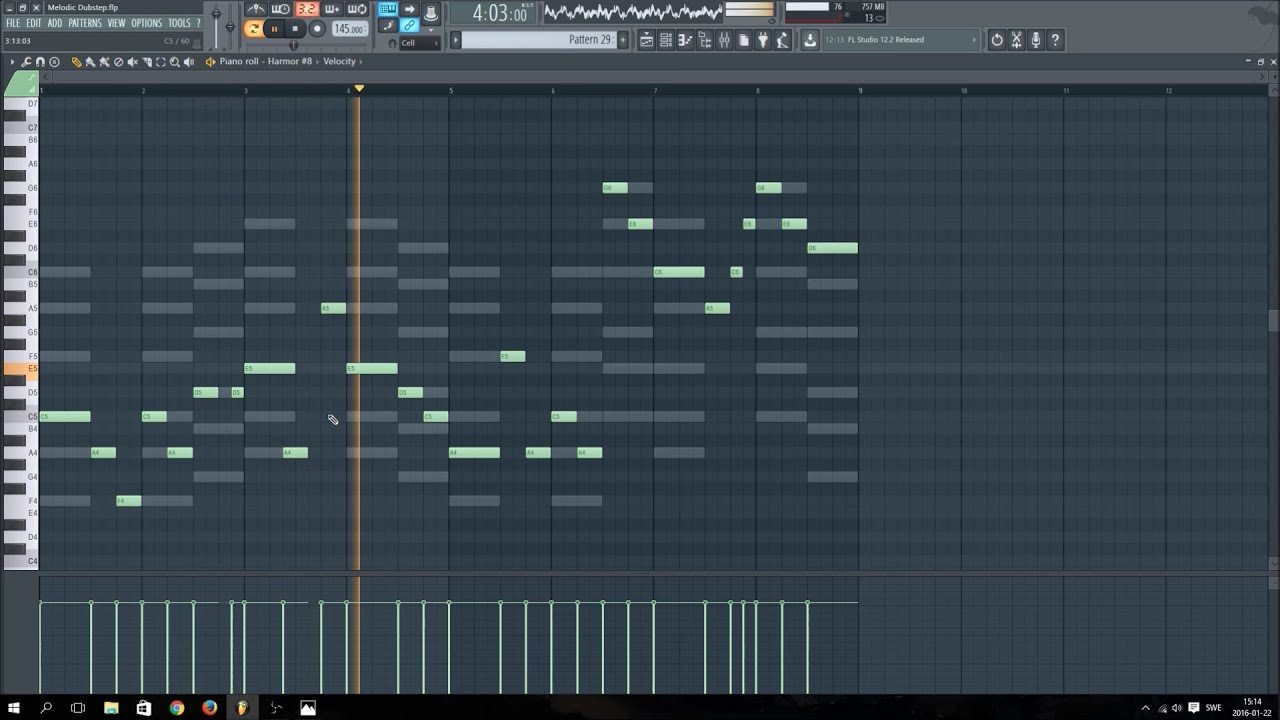Hocketing is a popular technique used in many genres of electronic music like progressive house, electro and techno. But what is it? Wikipedia defines hocketing as follows:
“In music, hocket is the rhythmic linear technique using the alternation of notes, pitches, or chords. In medieval practice of hocket, a single melody is shared between two (or occasionally more) voices such that alternately one voice sounds while the other rests.”
Wikipedia
Call me superficial, but this definition is a bit too much if you ask me. To make this a little easier to understand, have a listen to this short loop from an electro house track by Porter Robinson:
Notice how the producer used multiple audio-samples and synth shots to create an interesting riff looping over 2 bars? This is a great example of hocketing, and you can find this technique in many forms of electronic music.
Electro and dubstep are great genres to illustrate this technique, because rely heavily on hockets to make their riffs more interesting. Hocketing is also popular in other genres, however it’s not always as easy to discern.
Some more subtle forms of EDM may use hocketing on elements in the background like hi-hat patterns or percussive loops that are chopped up and mixed to form a new loop.
What can you achieve with this technique?
The idea is to divide one musical sequence among various synth and samples that, together, compose a more interesting melody. Once you get the hang of this technique, it allows you to breathe life into your loops really easily.
To illustrate this, let’s explore a quick example. Have you ever noticed how people tell stories? The same story can be boring or wildly interesting, depending on who’s telling it.
A person who lays the entire thing on you in the exact same tone of voice? Super boring. You probably stop paying attention half-way through the story.
But what happens when the speaker changes his tone of voice as the story evolves? That’s how you build up and release tension. The story suddenly starts to evoke emotions!
We can achieve something similar in our music with hocketing. By using multiple instruments instead of just one, you can tell the same musical story in many different ways. Since each instrument has a similar timbre, you can preserve the consistency of the original piece while adding tons of interest!
Hocketing can also be used as a compositional technique. When you have a long piece of music that is played by a single instrument, it is often good to split it up into shorter sections.
Each has its’ own “hocketed” instrument playing that part of the main sequence. This breathes tons of life into your musical piece as it starts to flow and tell a story.
An example
Let’s give this a try and show you how it works in music production. We start out by laying down a kick and snare drum, and we write a little melody to play over this beat.
It sounds good, but there is not a whole lot here that makes you want to keep listening to it. Let’s use our newly discovered technique to breath life into this sequence. We divide the entire thing into 4 parts, and assign an instrument to each part:
Now listen to it again. Notice how we are playing the exact same notes, but the sequence is starting to come alive. That is the power of hocketing!
Start practicing with this technique and I can promise you 100% that it will help bring your productions to a new level.

No responses yet